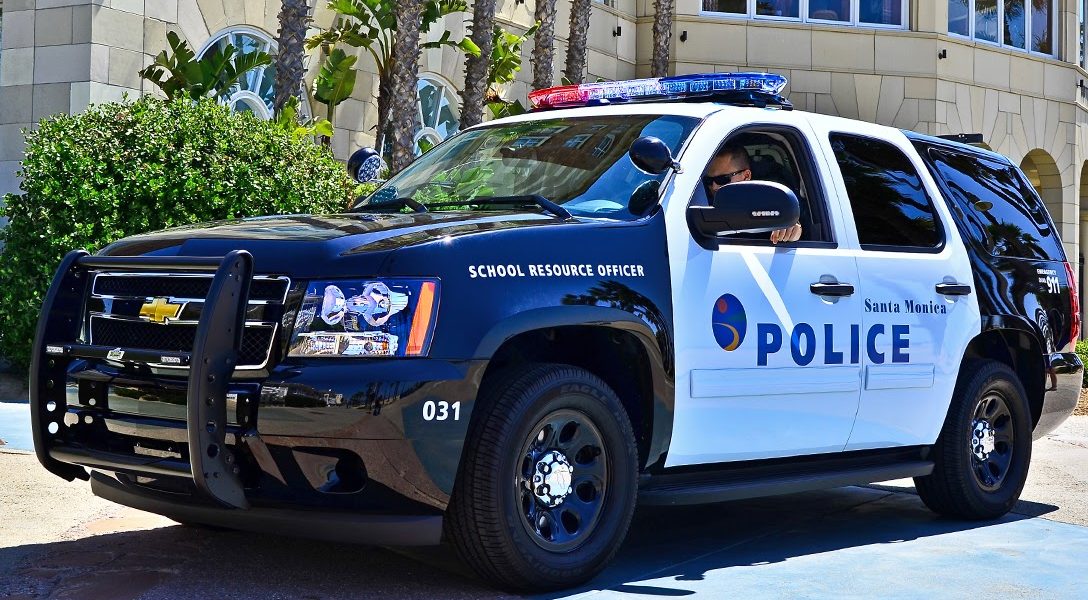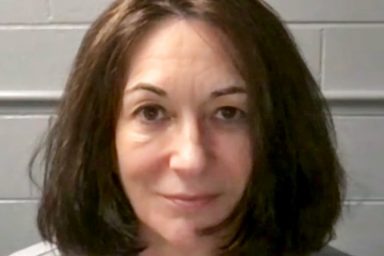For students of color, do officers in school do more harm than good?
As a junior at East High School, an inner-city school in Rochester, NY, Eric Kounnavong, a first-generation Laotian American, got along well with other students. He had simultaneously enrolled in three art classes to explore his Laotian heritage, and he was taking night classes to graduate early. On the surface, Eric’s future looked promising. That is, until rumors began circulating that Eric was in trouble. He was a gang member. People were looking for him. Not long after, Eric’s body was discovered, slumped over the steering wheel of his car in the driveway of a nearby church, a bullet wound to the head. Eric was 18 years old.
Eric’s death was a tragedy for his family and friends, but it was also a personal crisis for Moses Robinson, a police officer assigned to East High School as its school resource officer (SRO). Robinson had talked with Eric just a few days before. No one had told him about Eric’s situation. Eric hadn’t asked him for help, and Robinson had missed the signs that Eric was in trouble. Robinson’s connection to Eric hadn’t been deep enough to save the student’s life.
In Robinson’s mind, Eric’s death was a personal failure. A more pressing question, seen from a wider perspective, was whether a police officer in uniform is best equipped to connect emotionally and psychologically with students.
As cities across the country face pressure to sever ties with police in the form of SRO programs, local policy makers have had to decide on what proportion of scarce funds needs to be spent on armed protection for schools and how much might be better spent on social services.
The core question is whether SROs are really effective in implementing the community policing models promoted in a 2016 presidential proclamation by President Barack Obama. With the right personnel and training, SROs could help create a positive relationship between youth and the police. But what if the very presence of a police officer in a school leads to an excessive number of arrests and a disproportionate use of force?
Trading One Fear for Another
The increased reliance on SROs in schools is often attributed to the reaction to the increase in juvenile crime that took place in the 1980s and 1990s. School shootings since Columbine have been another factor behind the rise in the popularity of SROs. The call for SROs was renewed by the Trump administration in the wake of the Parkland school shootings in order to “harden” schools.
Other safety concerns play a role as well. Rochester, NY, the city in which Moses Robinson signed on as an SRO, has one of the highest crime rates in the country. Since he began his career in Rochester’s public schools, Robinson has had to deal with the murders of 17 of his students.
Lindsey Brown, a teacher and education leader in Rochester, NY, explained, “There are multiple intersections of violence that come together in a school building.” These include state violence that infiltrates a community, inherited trauma, and family violence. As Brown sees it, an SRO has specific training that most teachers don’t have. If you eliminate the SROs, Brown feels, you need to have a comprehensive alternative plan to maintain safety.
One risk in increasing the number of SROs is increased fear among students of color. White students may feel protected by them, but students of color fear being treated differently and more punitively, making many reluctant to go to school. Those feelings are exacerbated by stories of police using pepper spray or tasers on children, and videos of SROs using excessive force, such as the one showing police tackling an 11-year-old girl.
Dave Stieber, a Chicago public school teacher, became aware of this pervasive fear during the first year he began teaching. “I just couldn’t believe it,” he said. Steiber remembers one of his students crying as he arrived at his 7:30 class. Stieber learned a police officer had pulled a gun on the student on his way to school. In many instances, Stieber said, students were taken out of his class in handcuffs. “There was a lot of stuff I was hearing my first year,” he said. “Things I had never experienced, or had to experience about police.”
Robinson, a Black man who grew up in Philadelphia during the 1960s, understands why Black students are afraid of the police. Yet, he worries about defunding both the SROs and the police in general. Community policing models, a collaborative model of problem solving that involves the police and the local community, would deteriorate. Community safety would decline as well. As Robinson sees it, when community policing models are successful, school is a place the community can safely turn to for help. Students and parents can come to school to speak to an officer they have a relationship with.
The divided opinion concerning SROs is demonstrated by the fact that while Minneapolis and Denver voted to remove their SRO officers, and Los Angeles voted to reduce their school police budget by 35 percent, Chicago and New York City decided against removing their SRO officers. New York’s Mayor Bill de Blasio (D) nevertheless decided to redirect some of the NYPD’s funding toward social services for youth. In many cases, teachers unions like the Chicago Teachers Union, favor removing police officers.
Farmington, NM police officer Zachary Christensen has resigned after video showed him roughing up a sixth grader. The officer denied he was using excessive force on the 11-year-old girl even after a school administrator told him she is not a threat to anyone. pic.twitter.com/Rhz6p4rS9Z
— Keith Boykin (@keithboykin) October 23, 2019
Tough on Crime or Tough on Children?
A major criticism of SROs focuses on school discipline. What is often referred to as the “school-to-prison pipeline” risks criminalizing mundane, adolescent behaviors open-endedly as “insubordination.” Because this category of offenses is vague and subjective, it tends to disproportionately affect students of color.
Punishment labels the student as “pre-delinquent” and inserts him or her into the juvenile justice system.
Most of this is the result of zero-tolerance policies associated with the broken window theory, which holds that failing to punish someone who breaks a window will lead to more serious crimes in the future. Application of the theory in public schools has resulted in a growing number of students who have juvenile records, with charges that are treated much more harshly than they might have been in the past.
The juvenile justice system was originally intended to deal with serious crimes like burglary, car theft, assault, etc. The effect of leveling more serious punishments and suspensions disproportionately on communities of color and students with disabilities has led to a greater number of students who are more likely to fail a grade or drop out of school.
Studies have also shown that Black students are more likely to be suspended or expelled for reasons that are largely subjective, such as behavior interpreted as disrespect or insubordination. But white students are more likely to be suspended for objective rule violations, such as vandalism, smoking, and obscene language.
Punishment can affect students in many ways. It can diminish a student’s self-confidence, poison a student’s attitude towards school, and limit his or her future success in high school and college. It can also negatively change a teacher’s perception of the student.
Unfortunately, SROs were increasingly deployed expressly in order to enforce these policies, and the likelihood of negative outcomes increased with their presence. As became apparent in national crime statistics on arrests, SROs disproportionately arrested students of color, leading members of their communities to express the same fears and distrust toward SROs that they had previously felt towards the police in general.
Lindsey Brown also feels that there is an ethical issue when SROs, funded by taxpayer dollars, make an arrest that feeds the school-to-prison pipeline. That said, Brown told WhoWhatWhy that there are exceptions.
“The most amazing educator I have ever met,” she said, “was an SRO.”
Worth the Expense?
“Hardening schools” by adding SROs can come at the expense of funding other services — such as school counselors, nurses, psychologists, and social workers. A majority of states fail to meet the recommended student-to-nurse ratio of 750:1 or the student-to-counselor ratio of 250:1.
By reallocating money that is currently earmarked for the police, Stieber said, “You could literally have every student meet with a counselor or therapist, and you could schedule daily meetings based on that.” The effect would be to reduce violence by helping teenagers to deal with their emotions.
Because mental health challenges often emerge in adolescence, studies suggest that mental health issues can be identified and addressed at school, especially in communities that otherwise lack resources and access to mental health professionals. The result is not only better health, but also better attendance and academic performance, as well as fewer disciplinary actions and suspensions.
In the absence of counselors, nurses, psychologists, and social workers, SROs are often tasked with filling the void.
Mo Canady, executive director of the National Association of School Resource Officers, explained that all the other services — those performed by nurses, counselors, psychiatrists — require trained professionals.
“We need all of those people and layers for a school’s well-being,” Canady said. “It is a team effort. When I was an SRO, if it weren’t for our social workers and counselors, I would not have been effective.”
A Few Bad Cops?
Police officers are often recruited into SRO positions. How well they are prepared for the tasks required can be questionable. Only 12 states have laws standardizing SRO training. Many SROs police schools like they police the streets, without specialized training, and with no background that might equip them to understand the special problems faced by youth.
Canady stresses that “officers must be carefully selected” because this is one of “the most unique assignments in law enforcement” with great opportunities for community engagement but also significant consequences if mistakes are made.
Canady, who trains new SROs, feels there is a need for national guidelines on what to expect from an SRO. Training in de-escalation, coupled with training on the adolescent brain, are extremely important. The SRO also needs to be sensitive to the requirements of special needs students as well as adolescent mental health issues. Additionally, officers need intensive training concerning their own implicit biases.
An understanding of implicit biases is vital because these are likely to be a barrier for any SRO who wants to build a relationship with students. Canady hopes that if SROs develop authentic relationships with students in diverse communities, positive community-based policing models will follow. That can lead to a future in which more people have positive relationships with law enforcement. Canady said, “Every officer in the country, not only SROs, would benefit from training on implicit bias.”
Moses Robinson added that SROs need to focus on understanding their role. While they may occasionally need to make arrests, their role is not to police schools. Instead, it is to build relationships with students — positive relationships that can serve as building blocks to improve relations between police and communities.
“Law enforcement shouldn’t be the first tool used in an incident,” Robinson said. “SROs should use restorative justice or methods that are less punitive.”
Police Panacea?
Many educators advocate for restorative justice. The focus should be on repairing harm done to interpersonal relationships in place of assigning blame and punishment. Schools should teach students to focus on building and repairing relationships with each other, identifying the causes of bad behavior, while keeping students in school if at all possible.
Stieber noted that in every school fight he has witnessed, one student has made another student angry. “If a fight breaks out, kids need to learn to de-escalate,” he said. People trained in de-escalation need to teach kids effective techniques for this to happen. When students are zip tied and taken away by police, Stieber asked, “How does that help? That is literally the school-to-prison pipeline.”
Lindsey Brown suggests that schools need to adopt comprehensive restorative practices from the bottom to the top. “Every single person in a school building should have a foundational knowledge of what that is,” she said. “If you have fidelity to the model, it reduces violence. We need to invest in restorative protocols.” Of course, there are times when safety is the primary issue. Brown says that those are situations in which an SRO can be invaluable if they are properly trained in de-escalation.
The problem — as recent incidents in which police have killed unarmed suspects have demonstrated — is that the required training in de-escalation is often either minimal or simply absent.
“If that capacity was more widespread,” Brown said, “we wouldn’t be seeing what we’re seeing. The fractured relationship would not be the same.”
Canady echoes Brown’s assessment. He is also convinced that SROs should not be involved in school discipline. With restorative justice as well as a careful selection of officers, he believes, SROs can reduce arrests by using school resources, including counselors and administrators, to handle cases that might otherwise be classified as misdemeanors or disorderly conduct.
“Good SROs have been doing restorative justice before the phrase became formalized,” Canady said. “By removing SROs you are potentially removing the best filter against juvenile arrest. Now, when the school calls 911, they will get a patrol officer or deputy. When they respond, rarely will they respond with the same level of relationship than an SRO has. It makes it more likely to end in an arrest.”
As Robinson sees it, SROs are fundamental to models for successful community policing. If schools are to offer the community a place where they can find police officers with whom they have a relationship and who can help them, it is the responsibility of the police officer to listen and show respect when a student or a community expresses fear. It is up to the officer to provide a trauma-informed care approach. “When that goes wrong,” Robinson said, “it’s not the child’s fault; it’s the officer’s fault. This is an opportunity for criminal justice reform.”
But to Dave Stieber, SROs are not a workable solution. “We’re going to take something that is proven to harm our students, and we’re going to place them in our schools and experiment on our kids to make them feel safer?” he asked. “If you’re a teacher and you want your students to know the police, take them on a field trip.”
When Stieber considers all the studies detailing the harm that placing police in schools can cause academically, emotionally, and mentally, he concludes that the evidence is overwhelming. “There’s no doubt in my mind,” he said, “that police shouldn’t be in schools.”
Related front page panorama photo credit: Adapted by WhoWhatWhy from City of Westerville / Vimeo (CC BY 3.0).



